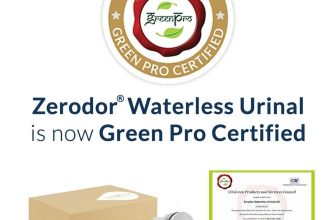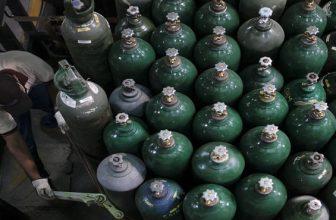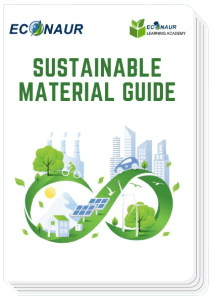Need to minimize the effect of Refrigerant on our Environment
Refrigerant is a compound typically found in either a fluid or gaseous state. It readily absorbs heat from the environment and can provide refrigeration or air conditioning when combined with other components such as compressors and evaporators. If you’ve heard about the R22 refrigerant phase out in favor of R410A refrigerant, you might be especially interested to know more about how refrigerant works and what part it plays in cooling your home.
Refrigeration, including air conditioning, is necessary for life and will continue to expand worldwide. Its impact on environment is huge, even if refrigeration technologies can also be part of solutions for mitigating global warming (new sources of energy, heat pumps…). Many efforts have already been made. However, reduction in CO2 emissions and fluorinated gas emissions are challenges to be addressed on an ongoing basis.
Refrigeration is necessary
Temperature is a magnitude and a key variable in physics, chemistry and biology, and characterizes the state of matter and liquid, solid and gaseous phases, which is vital to all living beings. Thus, thanks to research and development for almost 200 years, refrigeration technologies have progressively led to the providing of goods and the setting up of services vital to mankind:
– Cryogenics: air separation for medical uses (cryosurgery, anaesthesia); petrochemical refining, steel production..; space propulsion fuels, superconductivity for large research instruments, energy (thermonuclear fusion…), medical applications (scanners..), transport and distribution of natural gas or hydrogen, manufacturing of semi-conductors, sequestration of CO2, conservation of species…
– Other health uses: preservation of cells, tissues, organs, embryos… surgery and operating theatres, manufacturing and transport of drugs, vaccines..
– Air conditioning: vehicles, living areas, integrated systems (heating and cooling) with heat pumps, offices and factories, particularly in hot climates but also for technologies (electronic components, computer technology, data centres, biotechnology)…
– Food: manufacturing (texturation, formulation, freeze-drying, fermentation, concentration and separation), storage, transport, commercialization, domestic refrigerators. – Energy and environment applications: cryopreservation of genetic resources, capture and underground storage of CO2, heat pumps, new energies…
– Public works, leisure activities….
Moreover, these applications will continue to expand not only because they are needed for our whole current way of life (e.g. air conditioning for data centres and computer technology…) but also because they are necessary for life itself. Needs in terms of health will dramatically increase:
– according to the FAO1, about 1 billion people are undernourished.
The population is predicted to rise from about 7 billion now to probably a little more than 9 billion people in 2050.2 The global food energy intake per person is increasing too. The global food supply must increase considerably in order to achieve global food security in an equitable manner. The most commonly cited solutions in order to raise production are: i) expansion of the quantity of arable land; ii) higher crop frequency (often through irrigation); and iii) increased crop yields thanks to improved agricultural production technology. The lack of arable land along with limited water resources in many parts of the world is likely to hamper the first two solutions. Therefore, increasing agricultural production alone may prove insufficient to address food security and safety. Greater emphasis on a holistic solution, that encompasses the reduction of post-harvest losses, is an additional sustainable way of increasing food availability. Greater use of refrigeration technologies would ensure better worldwide nutrition, in terms of both quantity and quality. Foodstuffs of animal and plant origin are highly perishable and can host pathogens. Significant causes of food borne diseases and spoilage are bacterial contamination, survival and growth. The use of refrigeration substantially reduces bacterial growth in foods. A study indicates that annually, an estimated 1777 people die every year from known pathogens, out of a total of 5000 deaths from all food – borne diseases in the USA. Analysis of data on causes of foodborne illnesses suggests that over 90% of these illnesses are at least partly associated with poor temperature control. Global food production comprises roughly one third of perishable products requiring preservation. In 2003, out of a total global food production (agricultural products, fish, meat products and dairy products) of 5500 million tonnes, it was estimated that only 400 million tonnes were preserved thanks to refrigeration (chilled or frozen), whilst at least 1800 million tonnes required refrigeration.4 This results in huge losses.
– the population, both in developed and in most developing countries, will become older, more urban and will need better food safety and moreover more health care and products, more air conditioning… and thus more refrigeration equipment.
The huge development which is forecast must be sustainable.
Refrigeration and air conditioning have an important impact on the environment
On the stratospheric ozone layer More than 90% of refrigeration equipment relies on vapour compression using refrigerants and this figure will not change in the near future: other technologies do not generally have enough efficiency. Chlorinated refrigerants (chlorofluorocarbons – CFCs, and to a lesser extent, hydro chlorofluorocarbons – HCFCs) contribute to the depletion of stratospheric ozone if released into the atmosphere due to equipment leaks or if refrigerants are not properly recovered when disposal of the equipment takes place. CFCs and HCFCs are gradually being phased out thanks to the Montreal Protocol. Current measurements of the ozone layer show overall stability and probable recovery to the previous level around 2060. They are often replaced by hydro fluorocarbons (HFCs) which do not deplete the ozone layer but are potent greenhouse gases, as are HCFCs, when released into the atmosphere. CFCs were also greenhouse gases and their global warming potential was much higher. The impact of the Montreal Protocol is thus also positive regarding global warming. However, it is not enough.
On global warming
Refrigeration and air conditioning have an impact on global warming in three ways:
– release into the atmosphere of CFCs, HCFCs and HFCs. The contribution of these refrigerants represents between 1-2% of greenhouse gas emissions. It has been reduced considerably since 1987 (signature of the Montreal Protocol).
Rectifying the effect of Refrigeration – Refrigerant Reclamation
Through extensive chemical and mechanical processes, used refrigerants are “reclaimed” to meet stringent purity levels and then they re-enter the marketplace for use in consumer or industrial applications. It is important to note that refrigerant reclamation is different than refrigerant recycling. The recycling process simply removes contaminants so the refrigerant can be reused in the same equipment or in equipment owned by the same individual; recycled refrigerant is not eligible for resale. During reclamation, extensive filtering, drying, distillation, and chemical processes strip the refrigerant of impurities to ensure the gas meets or exceeds ARI-700 purity standards, which are the same standards required of virgin refrigerant.
How we can reclaim a Refrigerant?
Refrigerant reclamation must be performed by an EPA-certified refrigerant reclaimer. These reclaimers collect recovered refrigerant, reclaim the gases, and sell them to HVACR professionals. Many reclaimers purchase these used refrigerants, which can lead to opportunities for profit.
While there are many providers who purchase recovered refrigerant, not all of them are reclaimers. Ultimately, your refrigerant goes to an EPA-certified reclaimer. Going straight to the source eliminates the middleman and usually results in higher payouts. In addition to offering payment, your reclaimer should provide you with paperwork that documents that your recovered refrigerant was handled according to EPA regulations. In India it is developing day by day and now there is a awareness regarding this !
Why Reclamation Matters
As the EPA continues to phase certain refrigerants out of production, it is more important than ever for the industry to embrace reclamation to ensure current and future customer needs are met. Industry experts predict that the demand for these refrigerants will outpace their supply. Now is the time to recover and reclaim refrigerant.
AHRI also works with many participants in the industry to ensure that the standards that reclaimers are expected to achieve are well defined and support the highest level of integrity so technicians can be confident in the materials they are using and installing.
Before reclamation can begin the material must be recovered and the EPA defines that as “Recover refrigerant means to remove refrigerant in any condition from an appliance and to store it in an external container without necessarily testing or processing it in any way.”
Some circumstances where the material is being put back into the system it was removed and not being transferred to a new system the material can be recycled and the EPA defines that as “Recycle refrigerant means to extract refrigerant from an appliance and clean refrigerant for reuse without meeting all of the requirements for reclamation. In general, recycled refrigerant is refrigerant that is cleaned using oil separation and single or multiple passes through devices, such as replaceable core filter-driers, which reduce moisture, acidity, and particulate matter. These procedures are usually implemented at the field job site.”
Hence we need to use the Refrigerant Reclamation process to low down the use of gases and also work to bring alternatives for refrigerants.
Tags: Air conditioning: vehiclesbiotechnology)computer technologydata centersintegrated systems (heating and cooling) with heat pumpsliving areasNeed to minimize the effect of Refrigerant on our Environmentoffices and factoriesparticularly in hot climates but also for technologies (electronic components








